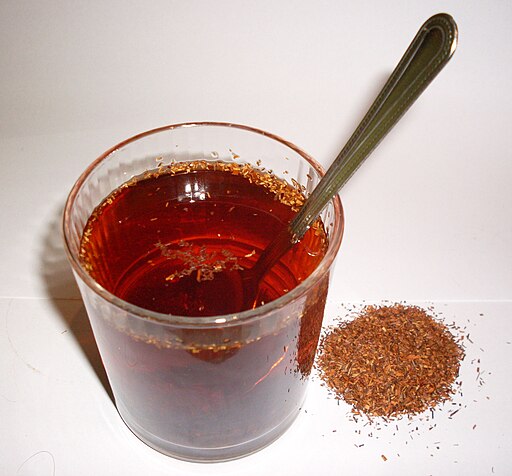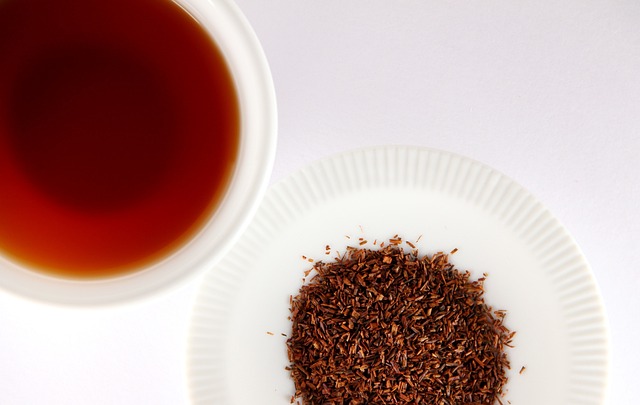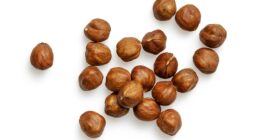Rooibos tea is herbal tea from South Africa, while honeybush tea is another South African herbal tea with a sweeter, honey-like flavor.
TL;DR Rooibos tea Vs. Honeybush tea
Rooibos tea, also known as red bush tea, has a naturally sweet and nutty flavor with hints of caramel. It is rich in antioxidants, which can help boost your immune system and protect against chronic diseases. Rooibos tea is also caffeine-free, making it a great choice for those looking to reduce their caffeine intake or enjoy a soothing beverage before bed.
Honeybush tea has a sweeter taste with floral undertones reminiscent of honey. Like rooibos tea, it is packed with antioxidants that promote overall health and well-being. Additionally, honeybush contains compounds called xanthones which have anti-inflammatory properties and may benefit heart health.
What is Rooibos Tea?

Rooibos tea, also known as red bush tea, is a caffeine-free herbal beverage that originates from the Western Cape province of South Africa. It is made from the leaves of the Aspalathus linearis plant, which is native to this region. The name ‘rooibos’ translates to ‘red bush’ in Afrikaans, referring to the vibrant reddish-brown color of the brewed tea.
One unique characteristic of rooibos tea is its rich and earthy flavor profile. It has a naturally sweet taste with hints of vanilla and honey notes, making it a delightful choice for those looking for a caffeine-free alternative to black or green tea. Rooibos tea can be enjoyed both hot and iced, allowing you to savor its refreshing properties all year round.

But what sets rooibos apart even more is its impressive array of health benefits. Packed with antioxidants such as aspalathin and nothofagin, rooibos offers potential anti-inflammatory and immune-boosting properties. Additionally, it’s low in tannins compared to traditional teas like black or green tea, making it gentle on the stomach and less likely to interfere with iron absorption.
What is Honeybush Tea?

Honeybush tea is a delicious herbal infusion that hails from the beautiful mountains of South Africa. Much like its cousin, rooibos tea, honeybush is caffeine-free and offers a range of health benefits.
This aromatic tea gets its name from the sweet scent it emits when brewed. It comes from the flowers of the Cyclopia plant, which are harvested and dried to create this unique beverage. The leaves and stems of honeybush are also used in the brewing process.
One distinctive feature of honeybush tea is its naturally sweet taste, which has hints of honey and caramel. This makes it a perfect choice for those who want to enjoy a flavorful cup without adding any sugar or sweeteners.
Like rooibos tea, honeybush contains antioxidants that help fight inflammation and protect against harmful free radicals in the body. It is also rich in vitamins and minerals such as iron, potassium, calcium, manganese, and zinc.
Rooibos tea Vs. Honeybush tea – Key differences
| Aspect | Rooibos Tea | Honeybush Tea |
|---|---|---|
| Plant Species | Aspalathus linearis | Cyclopia spp. |
| Flavor | Mild, earthy, slightly sweet | Sweet, honey-like |
| Color | Reddish-brown | Darker red to amber |
| Taste Notes | Woody, nutty, fruity | Sweet, floral, honeyed |
| Antioxidants | High in antioxidants, e.g., aspalathin | Contains a variety of antioxidants |
| Caffeine | Naturally caffeine-free | Naturally caffeine-free |
| Health Benefits | Potential health benefits include antioxidants and anti-inflammatory properties | Potential health benefits include antioxidants, potential stress relief, and soothing properties |
| Origin | Western Cape, South Africa | South Africa |
| Popular Blends | Often blended with fruits and herbs | Less commonly blended |
Rooibos tea Vs. Honeybush tea – Nutritional Benefits
Both Rooibos tea and Honeybush tea offer a range of potential nutritional benefits, although the specific compounds and quantities may vary slightly. Here are some of the nutritional benefits associated with each tea:
Rooibos Tea
- Antioxidants: Rooibos tea is rich in antioxidants, including aspalathin and quercetin. These antioxidants may help protect cells from oxidative stress and reduce inflammation.
- Minerals: Rooibos contains minerals such as calcium, magnesium, and potassium, which are essential for overall health, especially bone health and nerve function.
- No Caffeine: Rooibos tea is naturally caffeine-free, making it a suitable choice for individuals who want to avoid caffeine or have caffeine sensitivity.
- Low in Tannins: Rooibos has lower tannin levels compared to traditional teas, which means it’s less likely to interfere with the absorption of certain minerals.
- Hydrating: It is a hydrating beverage and can be a good alternative to water, especially when consumed without added sugar or milk.
Honeybush Tea
- Antioxidants: Honeybush tea also contains various antioxidants, including polyphenols and flavonoids, which can help combat oxidative stress and reduce the risk of chronic diseases.
- Isoflavones: Honeybush tea contains isoflavones, similar to those found in soy, which may have potential health benefits, including hormonal balance.
- No Caffeine: Like Rooibos, Honeybush tea is naturally caffeine-free, making it suitable for those looking to avoid caffeine.
- Low in Tannins: Honeybush tea is low in tannins, which means it’s less likely to affect mineral absorption.
- Potential Stress Relief: Some people find the mild, sweet flavor of Honeybush tea to be soothing, which can contribute to relaxation and stress relief.
It’s important to note that while both teas offer potential health benefits, they are not a replacement for a balanced diet and a healthy lifestyle.
To maximize the nutritional benefits of Rooibos and Honeybush teas, it’s recommended to enjoy them without excessive added sugar or high-fat additives.
Additionally, consulting with a healthcare professional can provide personalized guidance on incorporating these teas into your diet for specific health goals.
How to Brew the Perfect Cup of Rooibos or Honeybush Tea
Brewing the perfect cup of Rooibos or Honeybush tea requires some attention to detail, but it’s a straightforward process. Here are the steps to brew a delicious cup of either tea:
For Rooibos Tea
- Boiling Water: Start with fresh, cold water. Bring it to a rolling boil. Rooibos tea is often prepared with boiling water.
- Teapot or Teacup: Place your Rooibos tea leaves or tea bag in a teapot or teacup. Use about one teaspoon of loose Rooibos tea leaves per 8-ounce cup, or follow the instructions on the tea bag.
- Pour Hot Water: Pour the boiling water over the tea leaves or tea bag. Ensure that the water covers the tea completely.
- Steeping Time: Let the tea steep for 5 to 7 minutes. This allows the flavors to develop fully. You can adjust the steeping time to your taste preference; longer steeping times may result in a stronger flavor.
- Strain or Remove the Bag: If you used loose tea leaves, strain the tea into your cup. If you used a tea bag, remove the bag.
- Optional Additions: Rooibos tea is naturally sweet and flavorful on its own, but you can add honey, lemon, or milk if desired.
- Enjoy: Sip your Rooibos tea slowly and savor its unique flavor.
For Honeybush Tea
- Boiling Water: As with Rooibos, start with fresh, cold water and bring it to a rolling boil. Honeybush tea is often prepared with boiling water.
- Teapot or Teacup: Place your Honeybush tea leaves or tea bag in a teapot or teacup. Use about one teaspoon of loose Honeybush tea leaves per 8-ounce cup, or follow the instructions on the tea bag.
- Pour Hot Water: Pour the boiling water over the tea leaves or tea bag. Make sure the water covers the tea entirely.
- Steeping Time: Let the tea steep for 5 to 7 minutes or adjust the steeping time to your taste preference for a stronger or milder flavor.
- Strain or Remove the Bag: If using loose tea leaves, strain the tea into your cup. If you used a tea bag, remove the bag.
- Enjoy: Honeybush tea has a naturally sweet taste, so it’s often enjoyed without added sweeteners. However, you can add honey or lemon if you prefer.
- Temperature Consideration: Some Honeybush enthusiasts suggest using water that has cooled slightly from boiling, as very high temperatures may affect the flavor. Experiment to find your preferred temperature.
Personal taste varies, so feel free to adjust the tea-to-water ratio, steeping time, and optional additions to suit your preferences. Brewing the perfect cup of Rooibos or Honeybush tea is all about finding the balance that you enjoy most.
Image Credits
Featured Image By – miiya from Pixabay
Image 1 By – Żółwiciel, CC BY 3.0 , via Wikimedia Commons








